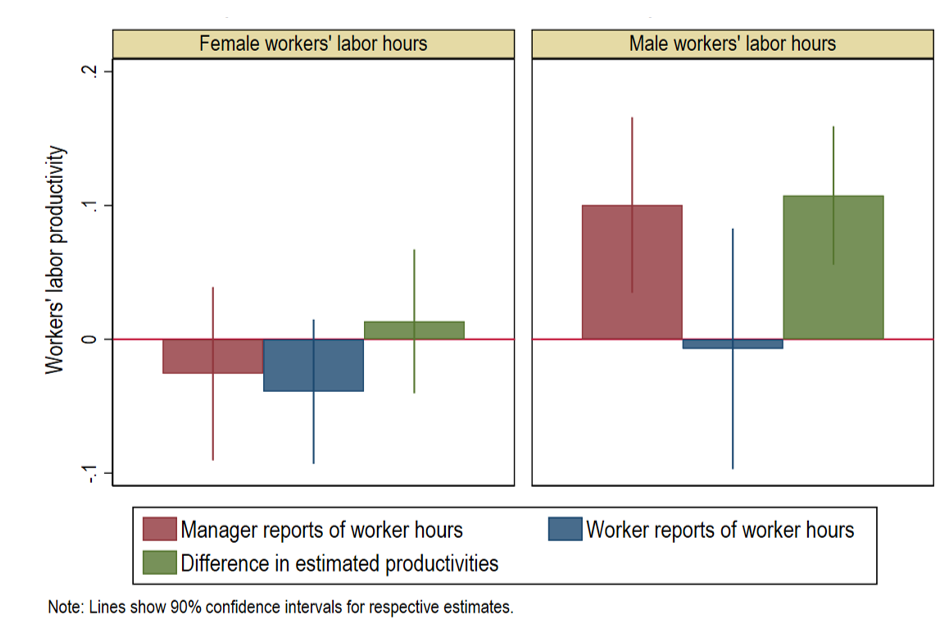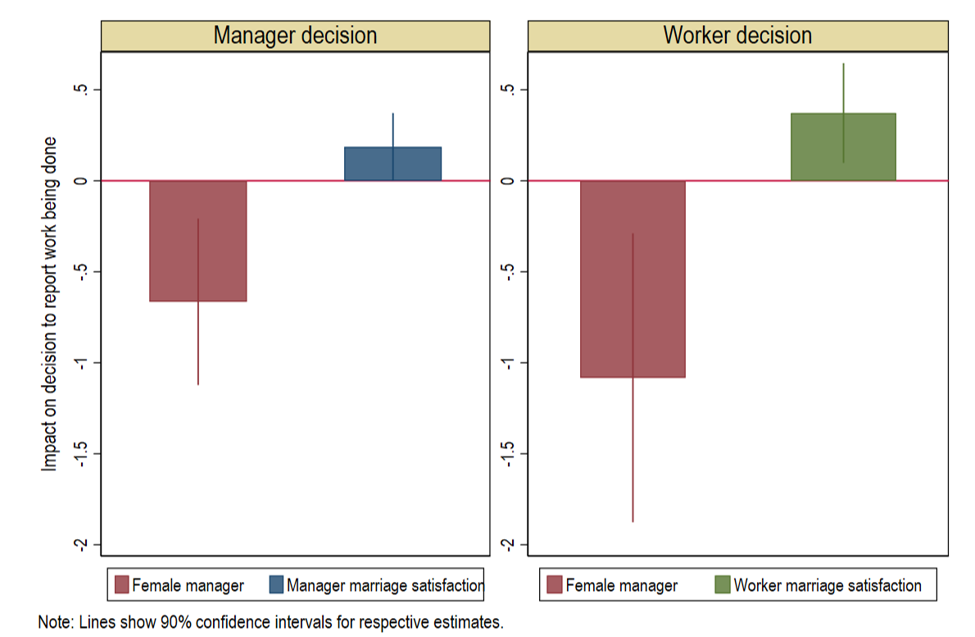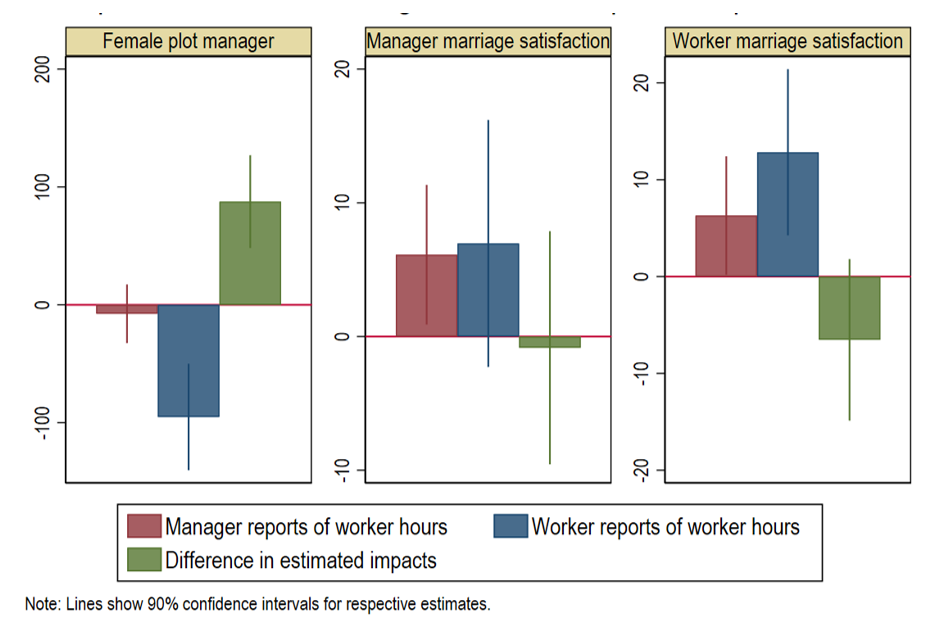
Estimates of labour productivity derived from self vs proxy-reports differ significantly due to gender and marriage satisfaction effects
Standard surveys in developing countries often rely only on household heads to provide information about all household members. An alternative approach is to conduct interviews with all household members above a certain age, under the premise that self-reported information is more reliable. However, there are only a few empirical studies that examine the potential advantages and disadvantages of self and proxy reporting in developing countries.
Self and proxy reporting may vary due to systematic under or overreporting. In Ghana, for example, we may expect male respondents to under-report the labour they provided on their wives’ plots due to prevailing gender norms that dictate men be providers for the family and not dependent on their wives (Quartey and Martin 2008). We also expect a lower marriage satisfaction to be correlated with misreporting, as lower marriage satisfaction may manifest itself in an unwillingness to report that help was provided to or received from the spouse (Donni and Chiappori 2011). Using an agricultural survey in Ghana, we examine possible differences in estimated labour productivities using self and proxy reports on labour (Dervisevic and Goldstein 2023). We also examine the impact of marriage perceptions and gender on self and proxy labour reporting.
Survey data from Ghana
In the late 1990s, Goldstein and Udry (1999) were involved in fieldwork collecting data from 435 farmer couples in four village clusters in eastern Ghana. In each of the 15 rounds of the survey, information on agricultural activity was collected on inputs, harvests, sales, and credit (Goldstein and Udry 2008). In the tenth round, questionnaires on marital attitudes and work on spouse’s plot were added to the survey. As the name of the latter module implies, each participating individual was asked about the work he or she had provided on all the plots managed by his/her spouse.
In what follows, we will use ‘worker report’ as a label for self-reports by managers’ spouses. We will use ‘manager report’ as a label for managers’ proxy report on workers’ labour.
Self vs proxy reporting and differences in labour productivity
We use agricultural information and information on labour hours to compare estimates of labour productivity. In Figure 1, estimated labour productivity of female workers is virtually zero for both manager and worker reports. On the other hand, male workers’ productivity is positive for female managers’ reports while it is zero for male workers reports. A significant difference in estimates implies that female managers’ or male workers’ reported values (or both) are reported with a bias – potentially due to gender norms and/or marriage satisfaction.
The difference in male workers’ productivity is a result with high policy relevance. Using female managers’ reports, the positive productivity of male workers implies there would be gains to additional work. With male workers’ reports, there is no output gain if additional units of labour are used, and so labour should unambiguously be reallocated.
Figure 1: Differences in workers' labour productivities.

Impact of gender and marriage satisfaction on labour reporting
When reporting labour, the first decision managers and workers make is whether to report any work done by the worker. Once managers and workers decide to report some positive number of hours, both reporters decide how many hours to report. Looking at the decision of whether to report any work being done by the worker, we obtain the results in Figure 2. We are mainly interested in the impact of gender and marriage satisfaction on the probability of reporting that work was done.
Marriage satisfaction has a positive and significant correlation with the reporting variable for both managers and workers, indicating that with better perceptions of marriage come increases in the probability of reporting labour. Higher satisfaction could lead to either lower intentional misreporting, or may lead to a higher likelihood of remembering workers’ efforts. On the other hand, low marriage satisfaction may lead to intentional and/or unintentional underreporting.
Also, we can see that both female managers and male workers are less likely to report labour provided by workers. In agricultural communities in Ghana, gender norms may be such that wives perform domestic chores while husbands are the providers for the family (Salm and Falola 2002). In this context, the social norm is for men not to help their wives with family-oriented work such as growing food for the household, meaning that both women and men do not want to report when that does happen.
Figure 2: Marriage satisfaction and reporting of work being done.

Next, we look at the impacts of gender and marriage satisfaction on the number of hours reported.
Figure 3: Marriage satisfaction and reported hours worked.

In Figure 3, a significant difference in estimated impacts of managers’ gender suggests an impact of gender on the reporting of labour. It seems that male workers tend to under-report their own work relative to what their manager-spouse reports. On the other hand, marriage satisfaction results imply there is no significant impact of marriage perceptions, as differences are not significant for both managers’ and workers’ marriage satisfaction.
Therefore, our results provide an indication that, while gender matters in both reporting decisions, marriage satisfaction seems to matter only when deciding whether to report any work being done. Further, our analysis implies there is a significant level of intentional misreporting, both among self (workers) and proxy (managers) respondents.
Conclusion
An important finding of our study is that there are significant differences in male workers’ estimated labour productivities using manager and worker reports. Self-reports by male workers suggest underreporting of hours they work on spouses’ plots. This suggests that the prevalent logic assuming self-reporters as more reliable sources may be problematic. Our results show that there might be circumstances where proxy reporters are a better choice, especially if some of the respondents are motivated to misreport their own work based on gender norms or other factors.
Our results have particular policy significance in the context of Sub-Saharan Africa, where work on household farms remains a dominant economic activity in rural areas. In order to create and implement policies that would promote growth-enhancing structural changes, we need reliable information on current agricultural activities. As McCullough (2015) points out, if we are underestimating labour supply, the implication is that current estimates of the productivity of labour may overestimate the true productivity of agricultural labour relative to other sectors.
References
Dervisevic, E and M Goldstein (2023), “He said, she said: The impact of gender and marriage perceptions on self and proxy reporting of labour”, Journal of Development Economics 161: 103028.
Donni, O and P A Chiappori (2011), Nonunitary models of household behavior: a survey of the literature, Household Economic Behaviors, New York: Springer: 1–40.
Goldstein, M and C Udry, C (1999), “Agricultural Innovation and Resource Management in Ghana”, Technical report MP17, IFPRI, Washington, DC.
Goldstein, M and C Udry (2008), “The profits of power: Land rights and agricultural investment in Ghana”, Journal of Political Economy 116(6): 981–1022.
McCullough, E B (2015), “Labour productivity and employment gaps in Sub-Saharan Africa”, World Bank Policy Research Working Paper, The World Bank, Washington, DC.
Quartey, Q and A Martin (2008), “Gender and diversity report: Ghana”, Technical report, University of Greenwich’s Natural Resources Institute/CSIR, Kent, United Kingdom.
Salm, S J, and T Falola (2002), Culture and Customs of Ghana, Westport: Greenwood Publishing Group.

